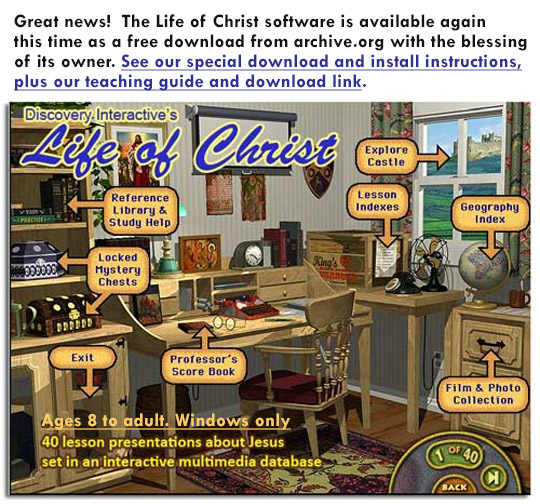Jesus and the Children
Game Workshop
Summary of Lesson Activities:
Children will play games and receive adoption certificates.
Scripture Reference:
Luke 18:15-17
Life Guiding Verse:
1 John 3:1, New Century Version “The Father has loved us so much that we are called children of God”
Lesson Objectives:
- Jesus included everyone, even children.
- Nothing should get in our way of following Jesus.
- A blessing is like a prayer for the good of a person.
- Learn that we are all children of God.
- Identify possible obstacles between them and Jesus.
- Understand that Jesus accepts them and blesses them.
Workshop Preparation:
- Prior to the workshop ask familiar church members (pastor, secretary, Faith Village volunteers, youth) for photos from childhood. Make copies and put them on a poster. Number the photos, write clues, make a photo identification key and a worksheet with all the possible names on it.
- Set up an obstacle course using a variety of objects children will have to go over, around and through.
Supplies List:
- Memory verse poster
- Children’s Bibles, marked at passage (3rd-5th)
- The Beginner’s Bible (k-2)
- Poster with childhood photos of members.
- Photo identification key
- “Who Am I?” matching worksheets
- Photo directory, if available
- Various obstacles such as boxes, chairs, ramps, etc.
- scrap paper, marker, tape
Presentation
Opening - Welcome and Lesson Introduction:
Welcome and Introductions:Greet the children and introduce yourself. (Remember, you are interacting with a different group of students each week, who may not know you.)
Explain the purpose of this workshop: Today we will play some games. We will learn that we are all children of God.
Our memory verse is from 1 John 3:1, New Century Version “The Father has loved us so much that we are called children of God”
Dig - Main Content and Reflection:
SAY: Right before the passage we are going to read in Luke, people were asking about who could get into heaven. While he was teaching them and telling them stories about the Kingdom of Heaven, some parents brought their children to Jesus. They wanted him to bless them.
k-2nd: Read the story from The Beginner’s Bible. Discuss:
I wonder why the disciples were trying to stop the parents from bringing their children to Jesus.
I wonder why Jesus was angry with them.
3rd-5th: Pass out Bibles for round robin reading. Review the scripture reference (i.e. Luke 18:15-17 = Book chapter : verse)
Read v. 15; DISCUSS: I wonder why the disciples were trying to stop the parents from bringing their children to Jesus.
Read v. 16; DISCUSS: I wonder what the disciples thought when Jesus told them not to stop the children from coming.
Read v. 17; DISCUSS: I wonder how grown-ups can become like children.
Suggest:
Children know they need help.
Children know they do not know everything yet.
Children are mostly very trusting.
Activity—Games
Game 1—“Don’t Let Anything Get in Your Way” Obstacle Course
Introduction:
SAY: Our memory verse says that we are all children of God—one big happy family!
Jesus told the people not to stop the children from coming to him. Another way to translate Jesus’ words is, “do not get in their way.” Jesus doesn’t want anything to get in the way of our being part of God’s family.
DISCUSS: What are some things that get in the way of our coming to church and being a part of the church family for Sunday school, worship, or other activities?
(Some obstacles could be: Sunday sports practice or games, sleep-overs, staying up too late on Saturday night, doing too much on the weekend, sleeping in, the temptation or lure of TV and video or computer games, being too busy with other things.)
Write down obstacles on separate pieces of paper, and tape to various obstacles. (NOTE: if a younger group is in this workshop 2nd, you can just use the ideas that the older kids came up with)
Instructions:
- Explain that they will go through the obstacle course one at a time.
- Show how the children are supposed to proceed through the obstacle course. Call attention to any special rules (like: “When you go into the tunnel, come right out the other end.” Hindsight always 20/20...)
- As they go through the obstacle course, cheer them on by saying things like, “Way to go, you made it past the video games!”
- After they finish the obstacle course, they can go get acquainted with other “brothers and sisters” pictured in the Children of God matching game.
Game 2—Children of God matching game (supervised by the shepherd or workshop assistant)
Instructions:
Make sure children understand that the photos are of members of the congregation who may be young or old, familiar or unfamiliar, etc. The point is that we are all children of God.
Instruct children to work together to identify the members in the photos. Match photos with the list of names provided on the worksheet.
It may help to use the photo directory.
There is one worksheet for the whole group. The shepherd can record the answers—put the number of the photo with the name of the person.
Transition to clean up and Journaling
- Pass out journals and journal pages.
- Have children clip journal pages to the fronts of the journals.
- Before giving the children their markers or crayons, talk about the journal activity: What is your favorite thing about being a child in God’s family?
- Help children who are struggling, if they want help.
- Warn the class when they have just one minute left.
Closing:
End with a prayer.
A lesson from First Presbyterian Church
Nevada, MO
A representative of Rotation.org reformatted this post to improve readability.



